Blue Origin NS-10
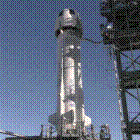 Commercial spaceflight operator Blue Origin, owned by Amazon.com founder Jeff Bezos, launches its tenth New Shepard flight. The uncrewed (but human-rated) capsule includes several payloads designed by NASA’s Flight Opportunities Program. As with past missions, both the capsule and its single-stage suborbital booster come in for soft landings near Blue Origin’s Texas launch facility. This is the fourth flight for the third New Shepard reusable capsule, as well as the fourth flight for the third New Shepard reusable booster.
Commercial spaceflight operator Blue Origin, owned by Amazon.com founder Jeff Bezos, launches its tenth New Shepard flight. The uncrewed (but human-rated) capsule includes several payloads designed by NASA’s Flight Opportunities Program. As with past missions, both the capsule and its single-stage suborbital booster come in for soft landings near Blue Origin’s Texas launch facility. This is the fourth flight for the third New Shepard reusable capsule, as well as the fourth flight for the third New Shepard reusable booster.
Blue Origin NS-9
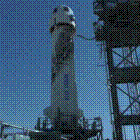 Commercial spaceflight operator Blue Origin, owned by Amazon.com founder Jeff Bezos, launches its ninth New Shepard flight. The uncrewed (but human-rated) capsule includes several commercial and research payloads, but serves primarily as a test of the ascent escape engine system designed to pull a crewed New Shepard capsule clear of a booster in the event of an anomaly during launch. As with past missions, both the capsule and its single-stage suborbital booster come in for soft landings near Blue Origin’s Texas launch facility. This is the third flight for the third New Shepard reusable capsule, as well as the third flight for the third New Shepard reusable booster.
Commercial spaceflight operator Blue Origin, owned by Amazon.com founder Jeff Bezos, launches its ninth New Shepard flight. The uncrewed (but human-rated) capsule includes several commercial and research payloads, but serves primarily as a test of the ascent escape engine system designed to pull a crewed New Shepard capsule clear of a booster in the event of an anomaly during launch. As with past missions, both the capsule and its single-stage suborbital booster come in for soft landings near Blue Origin’s Texas launch facility. This is the third flight for the third New Shepard reusable capsule, as well as the third flight for the third New Shepard reusable booster.
Blue Origin NS-8
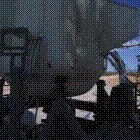 Commercial spaceflight operator Blue Origin, owned by Amazon.com founder Jeff Bezos, launches its eighth New Shepard flight. The uncrewed (but human-rated) capsule includes several commercial and research payloads, as well as a telemetry test dummy nicknamed “Mannequin Skywalker”, designed to record potential spaceflight stresses on future human passengers. An apogee of 351,000 feet is reached for the first time. As with past missions, both the capsule and its single-stage suborbital booster come in for soft landings near Blue Origin’s Texas launch facility. This is the second flight for the third New Shepard reusable capsule, as well as the second flight for the third New Shepard reusable booster.
Commercial spaceflight operator Blue Origin, owned by Amazon.com founder Jeff Bezos, launches its eighth New Shepard flight. The uncrewed (but human-rated) capsule includes several commercial and research payloads, as well as a telemetry test dummy nicknamed “Mannequin Skywalker”, designed to record potential spaceflight stresses on future human passengers. An apogee of 351,000 feet is reached for the first time. As with past missions, both the capsule and its single-stage suborbital booster come in for soft landings near Blue Origin’s Texas launch facility. This is the second flight for the third New Shepard reusable capsule, as well as the second flight for the third New Shepard reusable booster.
Richard Gordon, astronaut, dies
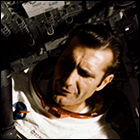 Gemini and Apollo astronaut Richard “Dick” Gordon dies at the age of 88. A veteran of the record-setting Gemini 11 mission (during which he undertook a spacewalk at the unprecedented altitude of 850 miles above Earth’s surface) and the Apollo 12 mission (during which he manned the command module Yankee Clipper while crewmates Pete Conrad and Alan Bean walked on the moon), Gordon was a naval aviator who eventually graduated to test pilot duties, eventually specializing in the F4H Phantom II fighter and teaching other pilots how to fly it. After his Apollo flight and retirement from NASA, Gordon kept working in the technology and engineering industries, but also diversified, becoming Executive VP of the New Orleans Saints football team.
Gemini and Apollo astronaut Richard “Dick” Gordon dies at the age of 88. A veteran of the record-setting Gemini 11 mission (during which he undertook a spacewalk at the unprecedented altitude of 850 miles above Earth’s surface) and the Apollo 12 mission (during which he manned the command module Yankee Clipper while crewmates Pete Conrad and Alan Bean walked on the moon), Gordon was a naval aviator who eventually graduated to test pilot duties, eventually specializing in the F4H Phantom II fighter and teaching other pilots how to fly it. After his Apollo flight and retirement from NASA, Gordon kept working in the technology and engineering industries, but also diversified, becoming Executive VP of the New Orleans Saints football team.
SpaceX shoots for the moon
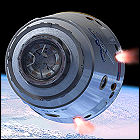 Private aerospace company SpaceX announces that a crew of two – not publicly identified by the company – have booked a private circumlunar flight scheduled to take place in 2018 aboard a SpaceX Dragon v2 capsule. The flight will utilize a free-return trajectory to the moon, around its dark side, and back to Earth, without orbiting or landing. At the time of the announcement, Dragon v2 has yet to fly into space, either with or without a crew, and the booster that would be required for this flight, the Falcon Heavy, has yet to be test-flown, either with or without a crew.
Private aerospace company SpaceX announces that a crew of two – not publicly identified by the company – have booked a private circumlunar flight scheduled to take place in 2018 aboard a SpaceX Dragon v2 capsule. The flight will utilize a free-return trajectory to the moon, around its dark side, and back to Earth, without orbiting or landing. At the time of the announcement, Dragon v2 has yet to fly into space, either with or without a crew, and the booster that would be required for this flight, the Falcon Heavy, has yet to be test-flown, either with or without a crew.
Dream Chaser Hubble repair mission proposed
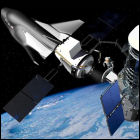 Though it has yet to actually go to space, the Sierra Nevada Dream Chaser spacecraft is floated as a possible savior for the Hubble Space Telescope, with a very preliminary mission proposal for a repair mission to the telescope which has now been operational in orbit for over a quarter of a century. The possible mission is brought forth as an example of increasing high-profile cooperation between NASA and private space companies. The Dream Chaser’s earliest orbit test flights are not expected to take place prior to 2019; if the mission takes place in 2020 at the earliest, Hubble will by then be 30 years old.
Though it has yet to actually go to space, the Sierra Nevada Dream Chaser spacecraft is floated as a possible savior for the Hubble Space Telescope, with a very preliminary mission proposal for a repair mission to the telescope which has now been operational in orbit for over a quarter of a century. The possible mission is brought forth as an example of increasing high-profile cooperation between NASA and private space companies. The Dream Chaser’s earliest orbit test flights are not expected to take place prior to 2019; if the mission takes place in 2020 at the earliest, Hubble will by then be 30 years old.
Gene Cernan, Apollo 17 astronaut, dies
 Apollo 17 Commander Eugene Cernan, the last human to leave the surface of the moon in the 20th century, dies at the age of 82. One of the members of NASA’s second astronaut class, recruited in 1963 to take part in the Gemini program, Cernan first flew into space aboard Gemini 9 in 1966, a mission in which he became the second American spacewalker, though his assigned tasks outside the Gemini spacecraft proved to be dangerously exhausting. His second flight, as the lunar module pilot for Apollo 10, saw him flying a lunar lander to within miles of the moon’s surface in May 1969, a dress rehearsal for the upcoming Apollo 11 mission. He commanded the final Apollo moon landing mission, Apollo 17, in December 1972, where he earned the title of “last man on the moon” by being the last astronaut to leave the lunar surface to re-enter the Apollo 17 lander. He later wrote an autobiography about his spaceflight experiences, and was frequently outspoken about his disappointment that no one walked on the moon again in his lifetime.
Apollo 17 Commander Eugene Cernan, the last human to leave the surface of the moon in the 20th century, dies at the age of 82. One of the members of NASA’s second astronaut class, recruited in 1963 to take part in the Gemini program, Cernan first flew into space aboard Gemini 9 in 1966, a mission in which he became the second American spacewalker, though his assigned tasks outside the Gemini spacecraft proved to be dangerously exhausting. His second flight, as the lunar module pilot for Apollo 10, saw him flying a lunar lander to within miles of the moon’s surface in May 1969, a dress rehearsal for the upcoming Apollo 11 mission. He commanded the final Apollo moon landing mission, Apollo 17, in December 1972, where he earned the title of “last man on the moon” by being the last astronaut to leave the lunar surface to re-enter the Apollo 17 lander. He later wrote an autobiography about his spaceflight experiences, and was frequently outspoken about his disappointment that no one walked on the moon again in his lifetime.
Piers Sellers, astronaut, dies
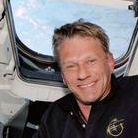 British-born shuttle astronaut Piers Sellers dies of pancreatic cancer at the age of 61. A veteran of over 559 hours in space as a crew member of shuttle missions STS-112, STS-121 and STS-132, Sellers was trained as a meteorologist and did much of his research on climate change, eventually becoming NASA’s acting director of Earth sciences after retiring from flight duty.
British-born shuttle astronaut Piers Sellers dies of pancreatic cancer at the age of 61. A veteran of over 559 hours in space as a crew member of shuttle missions STS-112, STS-121 and STS-132, Sellers was trained as a meteorologist and did much of his research on climate change, eventually becoming NASA’s acting director of Earth sciences after retiring from flight duty.
John Glenn, the last Mercury astronaut, dies
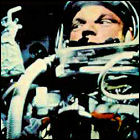 The last living member of the original Mercury astronaut group, former Senator John Glenn, dies at the age of 95. Born in 1921, Glenn was a decorated combat pilot who flew during World War II and the Korean War, before turning his piloting skills to testing experimental aircraft. This brought him to NASA’s attention, and he made the first orbital flight by an American astronaut in 1962. Upon returning from that historic flight, he was removed from NASA’s flight rotation by the request of President Kennedy, who didn’t want to risk the life of a national hero. Glenn then turned to the equally high-stakes world of politics, first running for Congress in 1964, but not winning a Senate seat until 1974. Glenn remained in Congress through 1998, at which point he finally returned to orbit aboard the space shuttle Discovery, the oldest space traveler to have done so.
The last living member of the original Mercury astronaut group, former Senator John Glenn, dies at the age of 95. Born in 1921, Glenn was a decorated combat pilot who flew during World War II and the Korean War, before turning his piloting skills to testing experimental aircraft. This brought him to NASA’s attention, and he made the first orbital flight by an American astronaut in 1962. Upon returning from that historic flight, he was removed from NASA’s flight rotation by the request of President Kennedy, who didn’t want to risk the life of a national hero. Glenn then turned to the equally high-stakes world of politics, first running for Congress in 1964, but not winning a Senate seat until 1974. Glenn remained in Congress through 1998, at which point he finally returned to orbit aboard the space shuttle Discovery, the oldest space traveler to have done so.
Soyuz MS-02
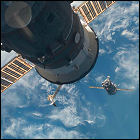 The second uprated Soyuz MS vehicle is launched from Baikonur Cosmodrome. The crew of Soyuz MS-02 are International Space Station Expedition 49 crew members Sergey Ryzhikov, Andrei Borisenko, and Shane Kimbrough; these three will become the Expedition 50 crew in November, and will return to Earth in February 2017 aboard the same vehicle.
The second uprated Soyuz MS vehicle is launched from Baikonur Cosmodrome. The crew of Soyuz MS-02 are International Space Station Expedition 49 crew members Sergey Ryzhikov, Andrei Borisenko, and Shane Kimbrough; these three will become the Expedition 50 crew in November, and will return to Earth in February 2017 aboard the same vehicle.
Shenzhou 11
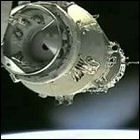 China’s Shenzhou 11 mission is launched, the country’s sixth crewed flight, with a two-man crew consisting of Jing Haipeng (veteran of the Shenzhou 7 and Shenzhou 9 missions) and rookie taikonaut Chen Dong. The vehicle’s destination is the recently-launched Tiangong-2 space station, where it berths for nearly a month, giving the crew more room to perform experiments and Earth observations. Shenzhou 11 returns to Earth in November after a full month in orbit.
China’s Shenzhou 11 mission is launched, the country’s sixth crewed flight, with a two-man crew consisting of Jing Haipeng (veteran of the Shenzhou 7 and Shenzhou 9 missions) and rookie taikonaut Chen Dong. The vehicle’s destination is the recently-launched Tiangong-2 space station, where it berths for nearly a month, giving the crew more room to perform experiments and Earth observations. Shenzhou 11 returns to Earth in November after a full month in orbit.
Blue Origin NS-6
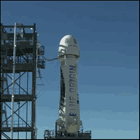 Commercial spaceflight operator Blue Origin, owned by Amazon.com founder Jeff Bezos, launches its sixth New Shepard flight. To conduct a live test of survivability of the launch abort system, the capsule is commanded to blast free of its booster at Max-Q (the moment of maximum aerodynamic pressure on the combined vehicle). The uncrewed (but human-rated) capsule survives the simulated emergency separation and lands safely, but surprisingly, the single-stage suborbital booster also recovers from the stress of the abort test and lands safely near Blue Origin’s Texas launch facility. This is the fifth and final flight for the second New Shepard reusable capsule, as well as the fifth and final flight for the second New Shepard reusable booster. Flight tests will resume in late 2017 with a new booster and capsule.
Commercial spaceflight operator Blue Origin, owned by Amazon.com founder Jeff Bezos, launches its sixth New Shepard flight. To conduct a live test of survivability of the launch abort system, the capsule is commanded to blast free of its booster at Max-Q (the moment of maximum aerodynamic pressure on the combined vehicle). The uncrewed (but human-rated) capsule survives the simulated emergency separation and lands safely, but surprisingly, the single-stage suborbital booster also recovers from the stress of the abort test and lands safely near Blue Origin’s Texas launch facility. This is the fifth and final flight for the second New Shepard reusable capsule, as well as the fifth and final flight for the second New Shepard reusable booster. Flight tests will resume in late 2017 with a new booster and capsule.
Tiangong-2 space station launched
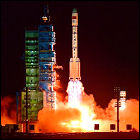 China launches its second space station, Tiangong-2, into orbit, ahead of a Shenzhou flight scheduled to carry the station’s first crew in October. Weighing over nine tons, Tiangong-2 is larger than its predecessor (which remains in orbit unoccupied, and believed to be losing attitude control), and is capable of being resupplied by uncrewed cargo vehicles called Tianzhou, similar to the Russian Progress vehicles that have resupplied Salyut, Mir, and the International Space Station. Plans at the time of launch call for Tiangong-2 to be visited by two crews.
China launches its second space station, Tiangong-2, into orbit, ahead of a Shenzhou flight scheduled to carry the station’s first crew in October. Weighing over nine tons, Tiangong-2 is larger than its predecessor (which remains in orbit unoccupied, and believed to be losing attitude control), and is capable of being resupplied by uncrewed cargo vehicles called Tianzhou, similar to the Russian Progress vehicles that have resupplied Salyut, Mir, and the International Space Station. Plans at the time of launch call for Tiangong-2 to be visited by two crews.
ISS is BEAMed up
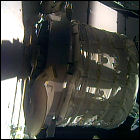 For the first time since the final Space Shuttle flights in 2011, a new habitation module is attached to the International Space Station. Brought to orbit via a recent Dragon unmanned cargo craft, the BEAM (Bigelow Expandable Activity Module), constructed by Bigelow Aerospace based on ideas studied by NASA in the 1990s, is a test of a reinforced, inflatible crew module for the station. (The inflation of the module will be accomplished via a supply of air built into the module itself.) Not to be inflated and occupied until May, BEAM will be studied for its resistance to solar radiation and micrometeroid impacts over a two-year period. Bigelow already has plans for an independent, commercial space station utilizing similar inflatible designs if BEAM’s tour of duty is a success, and has previously orbited testbed models of inflatible station modules.
For the first time since the final Space Shuttle flights in 2011, a new habitation module is attached to the International Space Station. Brought to orbit via a recent Dragon unmanned cargo craft, the BEAM (Bigelow Expandable Activity Module), constructed by Bigelow Aerospace based on ideas studied by NASA in the 1990s, is a test of a reinforced, inflatible crew module for the station. (The inflation of the module will be accomplished via a supply of air built into the module itself.) Not to be inflated and occupied until May, BEAM will be studied for its resistance to solar radiation and micrometeroid impacts over a two-year period. Bigelow already has plans for an independent, commercial space station utilizing similar inflatible designs if BEAM’s tour of duty is a success, and has previously orbited testbed models of inflatible station modules.
Dragon CRS-8
 SpaceX launches the unmanned Dragon CRS-8 (Commercial Resupply Mission 8) to the International Space Station, carrying supplies and experiments, as well as delivering via its cargo trunk the Bigelow Expandable Activity Module (BEAM), the first new addition to the ISS since 2011. The flight is a success, and for the first time, the Falcon 9 first stage returns intact to an unmanned drone barge in the Atlantic Ocean, where it can be refurbished and reused. Though SpaceX has previously brought an intact booster down on dry land, this is the first success in several attempts to recover the spent first stage at sea.
SpaceX launches the unmanned Dragon CRS-8 (Commercial Resupply Mission 8) to the International Space Station, carrying supplies and experiments, as well as delivering via its cargo trunk the Bigelow Expandable Activity Module (BEAM), the first new addition to the ISS since 2011. The flight is a success, and for the first time, the Falcon 9 first stage returns intact to an unmanned drone barge in the Atlantic Ocean, where it can be refurbished and reused. Though SpaceX has previously brought an intact booster down on dry land, this is the first success in several attempts to recover the spent first stage at sea.
Blue Origin NS-4
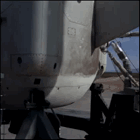 Commercial spaceflight operator Blue Origin, owned by Amazon.com founder Jeff Bezos, launches its fourth New Shepard flight. The uncrewed (but human-rated) capsule and its single-stage suborbital booster come in for soft landings near Blue Origin’s Texas launch facility. This is the third flight for the second New Shepard reusable capsule, as well as the third flight for the second New Shepard reusable booster; both will be flown again later in 2016.
Commercial spaceflight operator Blue Origin, owned by Amazon.com founder Jeff Bezos, launches its fourth New Shepard flight. The uncrewed (but human-rated) capsule and its single-stage suborbital booster come in for soft landings near Blue Origin’s Texas launch facility. This is the third flight for the second New Shepard reusable capsule, as well as the third flight for the second New Shepard reusable booster; both will be flown again later in 2016.
The One-Year Mission ends
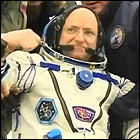 Having traveled to the International Space Station as part of the Expedition 43 crew, astronaut Scott Kelly and cosmonaut Mikhail Korniyenko return to Earth after their heavily-publicized “One-Year Mission”, along with cosmonaut Sergey Volkov. Though the duration of the “One-Year Mission” is closer to 11 months, Kelly has broken the American record for continuous time spent in space. NASA hopes medical data gathered during his stay will help to keep future astronauts healthy, both physically and mentally, on long-term flights to such future destinations as Mars.
Having traveled to the International Space Station as part of the Expedition 43 crew, astronaut Scott Kelly and cosmonaut Mikhail Korniyenko return to Earth after their heavily-publicized “One-Year Mission”, along with cosmonaut Sergey Volkov. Though the duration of the “One-Year Mission” is closer to 11 months, Kelly has broken the American record for continuous time spent in space. NASA hopes medical data gathered during his stay will help to keep future astronauts healthy, both physically and mentally, on long-term flights to such future destinations as Mars.
Ed Mitchell, Apollo 14 astronaut, dies
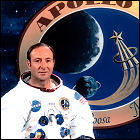 On the eve of the 45th anniversary of the Apollo 14 moon landing, astronaut Edgar “Ed” Mitchell dies at the age of 85. The sixth human being to set foot on the moon, Mitchell accompanied Alan Shepard to the lunar surface aboard the Apollo 14 lander. Following his visit to the moon, Mitchell had become interested in researching human consciousness and extra-sensory perception, but later surrounded himself with controversy by claiming that he was certain that UFOs had visited Earth.
On the eve of the 45th anniversary of the Apollo 14 moon landing, astronaut Edgar “Ed” Mitchell dies at the age of 85. The sixth human being to set foot on the moon, Mitchell accompanied Alan Shepard to the lunar surface aboard the Apollo 14 lander. Following his visit to the moon, Mitchell had become interested in researching human consciousness and extra-sensory perception, but later surrounded himself with controversy by claiming that he was certain that UFOs had visited Earth.
Blue Origin NS-3
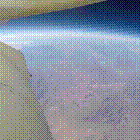 Commercial spaceflight operator Blue Origin, owned by Amazon.com founder Jeff Bezos, launches its third New Shepard flight. The uncrewed (but human-rated) capsule and its single-stage suborbital booster come in for soft landings near Blue Origin’s Texas launch facility, marking the first reflight of an already-flown booster. This is the second flight for the second New Shepard reusable capsule, as well as the second flight for the second New Shepard reusable booster; both will be flown again.
Commercial spaceflight operator Blue Origin, owned by Amazon.com founder Jeff Bezos, launches its third New Shepard flight. The uncrewed (but human-rated) capsule and its single-stage suborbital booster come in for soft landings near Blue Origin’s Texas launch facility, marking the first reflight of an already-flown booster. This is the second flight for the second New Shepard reusable capsule, as well as the second flight for the second New Shepard reusable booster; both will be flown again.
A spacewalk washout
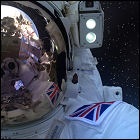 A relatively routine spacewalk at the International Space Station is cut short when astronaut Tim Kopra notices a globule of water in the helmet of his spacesuit. Perhaps mindful of a far more serious incident in 2013, NASA calls off the spacewalk, ordering Kopra and fellow astronaut Tim Peake – the first British spacewalker – back inside the station.
A relatively routine spacewalk at the International Space Station is cut short when astronaut Tim Kopra notices a globule of water in the helmet of his spacesuit. Perhaps mindful of a far more serious incident in 2013, NASA calls off the spacewalk, ordering Kopra and fellow astronaut Tim Peake – the first British spacewalker – back inside the station.
Blue Origin NS-2
 Commercial spaceflight operator Blue Origin, owned by Amazon.com founder Jeff Bezos, launches its second New Shepard flight. The uncrewed (but human-rated) capsule and its single-stage suborbital booster come in for soft landings near Blue Origin’s Texas launch facility, after refinements are made to the system of aerodynamic fins designed to keep the booster upright as it returns to the ground for a survivable landing. This is the first intact return of a space-flown booster to Earth. This is the first flight for the second New Shepard reusable capsule, as well as the first flight for the second New Shepard reusable booster; both will be reused again.
Commercial spaceflight operator Blue Origin, owned by Amazon.com founder Jeff Bezos, launches its second New Shepard flight. The uncrewed (but human-rated) capsule and its single-stage suborbital booster come in for soft landings near Blue Origin’s Texas launch facility, after refinements are made to the system of aerodynamic fins designed to keep the booster upright as it returns to the ground for a survivable landing. This is the first intact return of a space-flown booster to Earth. This is the first flight for the second New Shepard reusable capsule, as well as the first flight for the second New Shepard reusable booster; both will be reused again.
Chris Hadfield: Space Sessions
 Warner Music Canada releases the album Space Sessions: Songs From A Tin Can by former Canadian astronaut and International Space Station commander Chris Hadfield. Hadfield’s guitar parts and vocals were recorded aboard the station itself, in the relatively quiet confines of his sleeping quarters, using his iPad, and were then overdubbed and finished after his return to Earth. All of the songs on the album are written by Hadfield with the exception of his cover of David Bowie’s “Space Oddity”, which set YouTube viewing records in 2013 when it was released just before Hadfield’s departure from the space station.
Warner Music Canada releases the album Space Sessions: Songs From A Tin Can by former Canadian astronaut and International Space Station commander Chris Hadfield. Hadfield’s guitar parts and vocals were recorded aboard the station itself, in the relatively quiet confines of his sleeping quarters, using his iPad, and were then overdubbed and finished after his return to Earth. All of the songs on the album are written by Hadfield with the exception of his cover of David Bowie’s “Space Oddity”, which set YouTube viewing records in 2013 when it was released just before Hadfield’s departure from the space station.
Soyuz TMA-17M
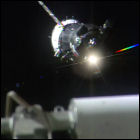 Russia launches three international crew members to the International Space Station aboard Soyuz TMA-17M. Upon reaching orbit, cosmonaut Oleg Kononenko and astronauts Kjell Lindgren and Kimiya Yui discover their spacecraft has a familiar problem: one of the Soyuz solar panel “wings” has failed to extend. As the vehicle is on a five-and-a-half-hour fast-track trajectory to the station, the mission continues and the Soyuz docks at the ISS without incident. After docking, the stuck solar panels extend fully, as happened in 2014’s Soyuz TMA-14M mission. The new visitors to the station will spend four months as part of the Expedition 44 crew.
Russia launches three international crew members to the International Space Station aboard Soyuz TMA-17M. Upon reaching orbit, cosmonaut Oleg Kononenko and astronauts Kjell Lindgren and Kimiya Yui discover their spacecraft has a familiar problem: one of the Soyuz solar panel “wings” has failed to extend. As the vehicle is on a five-and-a-half-hour fast-track trajectory to the station, the mission continues and the Soyuz docks at the ISS without incident. After docking, the stuck solar panels extend fully, as happened in 2014’s Soyuz TMA-14M mission. The new visitors to the station will spend four months as part of the Expedition 44 crew.
Blue Origin NS-1
 Commercial spaceflight operator Blue Origin, owned by Amazon.com founder Jeff Bezos, launches its first New Shepard flight, a booster and capsule which the company hopes will eventually carry paying passengers on short suborbital flights into space. The uncrewed (but human-rated) capsule comes in for a soft landing near Blue Origin’s Texas launch facility, though the booster – also intended to land and be refurbished for future reuse – does not land intact. This is the first in a series of uncrewed tests of the New Shepard launch system and suborbital vehicle; further tests will be flown over the next few years.
Commercial spaceflight operator Blue Origin, owned by Amazon.com founder Jeff Bezos, launches its first New Shepard flight, a booster and capsule which the company hopes will eventually carry paying passengers on short suborbital flights into space. The uncrewed (but human-rated) capsule comes in for a soft landing near Blue Origin’s Texas launch facility, though the booster – also intended to land and be refurbished for future reuse – does not land intact. This is the first in a series of uncrewed tests of the New Shepard launch system and suborbital vehicle; further tests will be flown over the next few years.
Progress M-27M’s lack of spin control
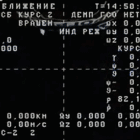 An unmanned Progress cargo vehicle, designated Progress M-27M, is launched by Russia to ferry 6,000 pounds of supplies, equipment and experiments to the International Space Station. But Progress ends up in the wrong orbit, tumbling out of control, with Russian ground controllers unable to send remote commands to the vehicle. Plans to dock the Progress capsule to the ISS are called off as further attempts are made to regain control; since the Progress is in the wrong orbit, it poses no present danger to the station.
An unmanned Progress cargo vehicle, designated Progress M-27M, is launched by Russia to ferry 6,000 pounds of supplies, equipment and experiments to the International Space Station. But Progress ends up in the wrong orbit, tumbling out of control, with Russian ground controllers unable to send remote commands to the vehicle. Plans to dock the Progress capsule to the ISS are called off as further attempts are made to regain control; since the Progress is in the wrong orbit, it poses no present danger to the station.
Orion EFT-1
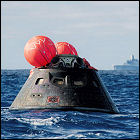 NASA launches Exploration Flight Test 1, the maiden unmanned voyage of the next-generation Orion space vehicle which is intended to assume the Space Shuttle’s place as NASA’s primary manned spacecraft. Heavily instrumented, Orion is boosted to a high altitude of 3,600 miles during its second orbit, and returns to Earth at 20,000mph, the fastest return of a man-rated spacecraft since the Apollo lunar missions. The flight profile of the EFT-1 mission is similar to that of 1967’s Apollo 4 mission, though ongoing budget constraints force NASA to launch Orion atop a Delta IV Heavy booster rather than the Space Launch System booster for which Orion has been designed. This budget crunch also prevents the Orion program from moving forward at the pace of Apollo: the next Orion flight will not take place for several years. Orion EFT-1 is also the first American spacecraft to be recovered from sea after a splashdown since 1975’s Apollo-Soyuz mission.
NASA launches Exploration Flight Test 1, the maiden unmanned voyage of the next-generation Orion space vehicle which is intended to assume the Space Shuttle’s place as NASA’s primary manned spacecraft. Heavily instrumented, Orion is boosted to a high altitude of 3,600 miles during its second orbit, and returns to Earth at 20,000mph, the fastest return of a man-rated spacecraft since the Apollo lunar missions. The flight profile of the EFT-1 mission is similar to that of 1967’s Apollo 4 mission, though ongoing budget constraints force NASA to launch Orion atop a Delta IV Heavy booster rather than the Space Launch System booster for which Orion has been designed. This budget crunch also prevents the Orion program from moving forward at the pace of Apollo: the next Orion flight will not take place for several years. Orion EFT-1 is also the first American spacecraft to be recovered from sea after a splashdown since 1975’s Apollo-Soyuz mission.
SpaceShip Two destroyed, pilot killed in crash
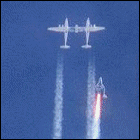 Virgin Galactica’s suborbital tourist spacecraft SpaceShip Two is launched on its first rocket-powered test since January 2014, this time using a modified rocket engine and a fuel mixture different from its previous test flights. Within seconds of its release and the firing of its engine, things go disastrously wrong: an explosion rips through the vehicle, which tumbles into the Mojave Desert from an altitude of 50,000 feet. One of SpaceShip Two’s pilots, Michael Alsbury, is killed on impact; the other pilot ejects from the vehicle and parachutes to the ground, though he is still severely injured. Virgin Galactic and the National Transportation Safety Board begin an investigation into the accident; though this first flightworthy SpaceShip Two model, the VSS Enterprise, is destroyed, another is under construction.
Virgin Galactica’s suborbital tourist spacecraft SpaceShip Two is launched on its first rocket-powered test since January 2014, this time using a modified rocket engine and a fuel mixture different from its previous test flights. Within seconds of its release and the firing of its engine, things go disastrously wrong: an explosion rips through the vehicle, which tumbles into the Mojave Desert from an altitude of 50,000 feet. One of SpaceShip Two’s pilots, Michael Alsbury, is killed on impact; the other pilot ejects from the vehicle and parachutes to the ground, though he is still severely injured. Virgin Galactic and the National Transportation Safety Board begin an investigation into the accident; though this first flightworthy SpaceShip Two model, the VSS Enterprise, is destroyed, another is under construction.
Cygnus cargo ship explodes on liftoff
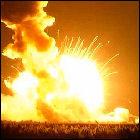 An unexpected malfunction destroys Orbital Sciences’ unmanned Cygnus cargo spacecraft a mere six seconds after its Antares booster rocket leaves the ground. Supplies and experiments bound for the International Space Station aboard the S.S. Deke Slayton (named after the late Mercury and Apollo/Soyuz astronaut) are destroyed in the explosion, along with several small secondary satellite payloads. Orbital Sciences and NASA begin an investigation into the accident, and cleanup of debris and damage at the Wallops Island launch facility begins.
An unexpected malfunction destroys Orbital Sciences’ unmanned Cygnus cargo spacecraft a mere six seconds after its Antares booster rocket leaves the ground. Supplies and experiments bound for the International Space Station aboard the S.S. Deke Slayton (named after the late Mercury and Apollo/Soyuz astronaut) are destroyed in the explosion, along with several small secondary satellite payloads. Orbital Sciences and NASA begin an investigation into the accident, and cleanup of debris and damage at the Wallops Island launch facility begins.
Soyuz TMA-14M / ISS Expedition 40
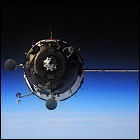 Part of the 40th full-time crew of the International Space Station lifts off from Russia’s Baikonur Cosmodrome aboard Soyuz TMA-14M. Upon arriving in orbit, one of the Soyuz solar panel “wings” fails to deploy, only unfolding properly once the vehicle has docked at the ISS. Aleksandr Samokutyayev, Yelena Serova and Barry Wilmore take up residence on the ISS, becoming part of the Expedition 40 and 41 crews. This crew returns to Earth in March 2015 aboard the same vehicle.
Part of the 40th full-time crew of the International Space Station lifts off from Russia’s Baikonur Cosmodrome aboard Soyuz TMA-14M. Upon arriving in orbit, one of the Soyuz solar panel “wings” fails to deploy, only unfolding properly once the vehicle has docked at the ISS. Aleksandr Samokutyayev, Yelena Serova and Barry Wilmore take up residence on the ISS, becoming part of the Expedition 40 and 41 crews. This crew returns to Earth in March 2015 aboard the same vehicle.
Orbital Sciences Cygnus CRS Orb-2
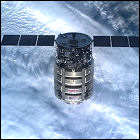 Orbital Sciences and NASA launch the second Cygnus unmanned cargo freighter to the International Space Station. Named after a recently deceased Shuttle astronaut, the S.S. Janice Voss carries over 3,000 pounds of new equipment and supplies to the station, where it remains docked for a month.
Orbital Sciences and NASA launch the second Cygnus unmanned cargo freighter to the International Space Station. Named after a recently deceased Shuttle astronaut, the S.S. Janice Voss carries over 3,000 pounds of new equipment and supplies to the station, where it remains docked for a month.